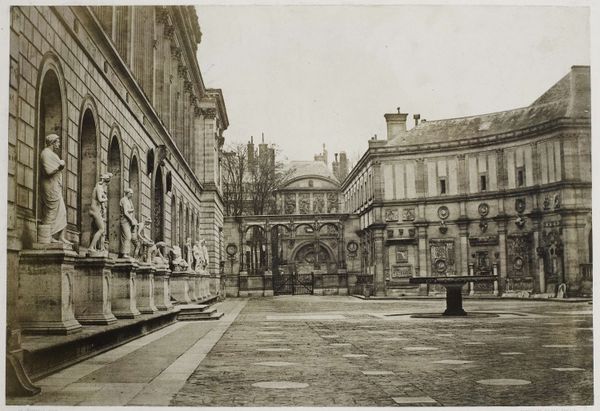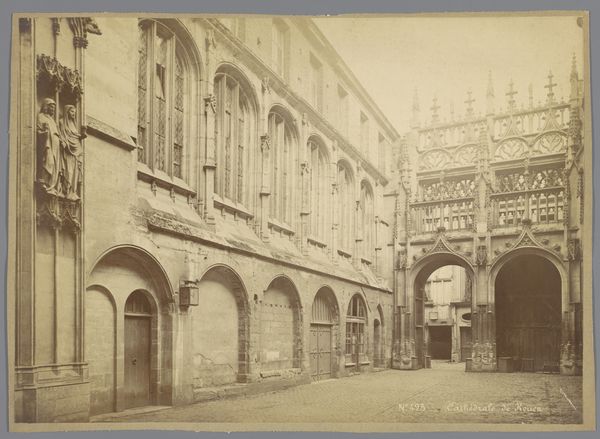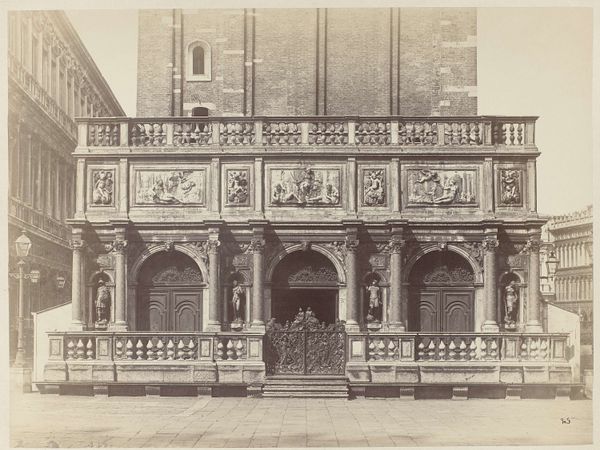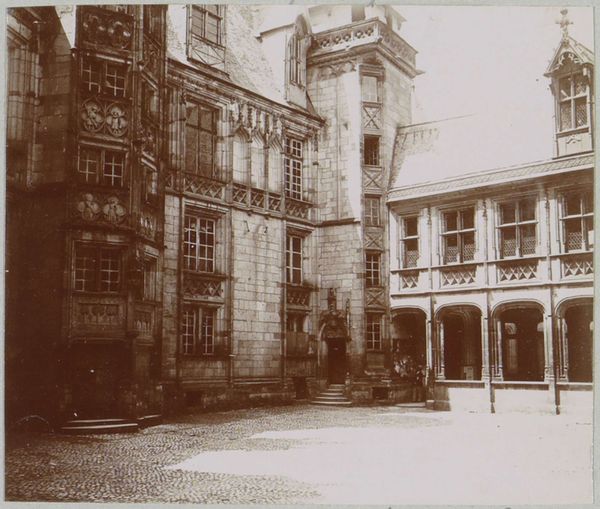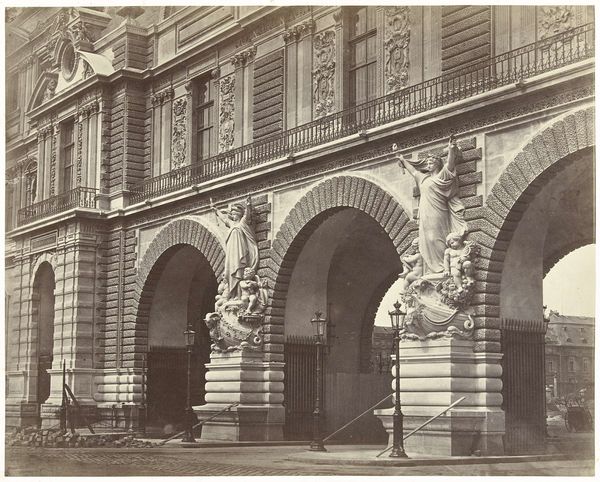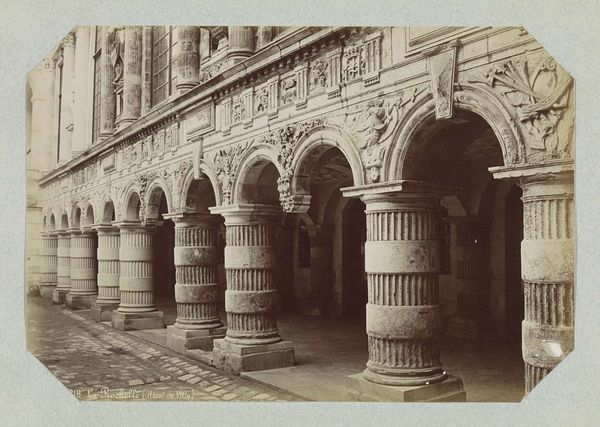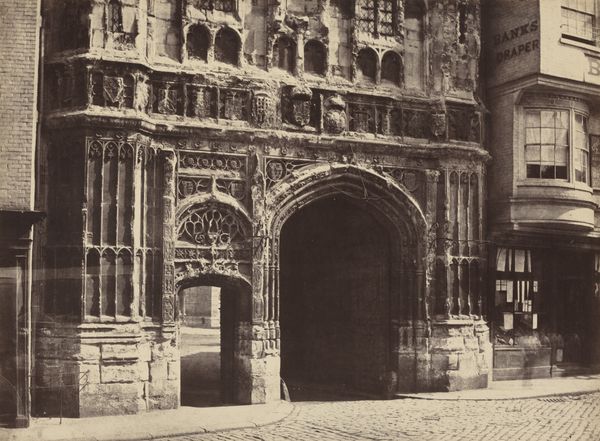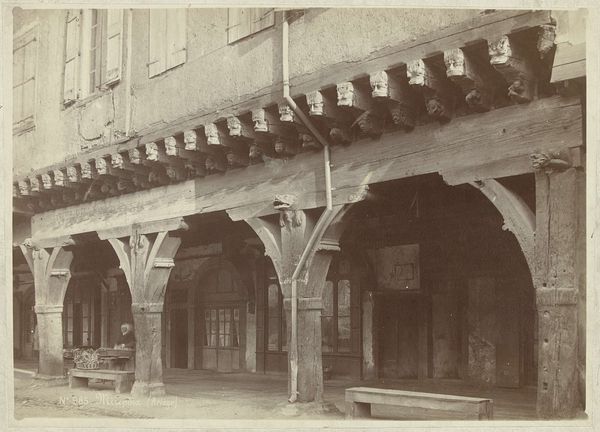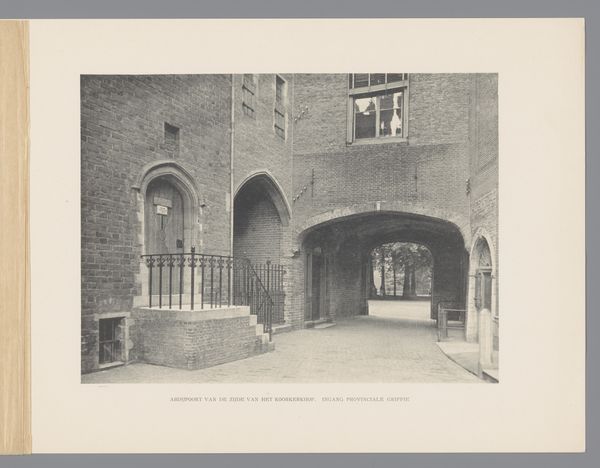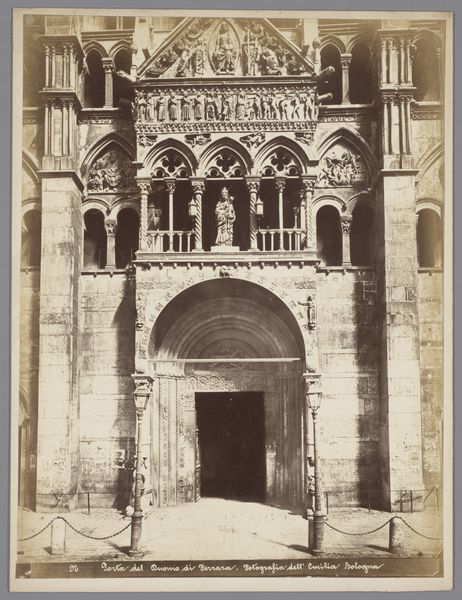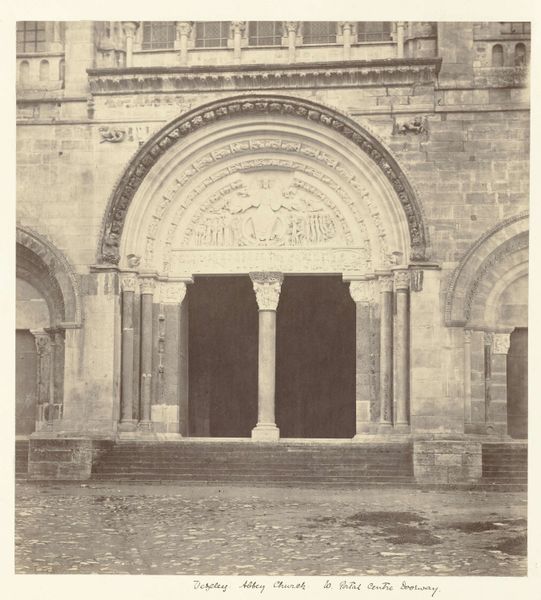
photography, albumen-print, architecture
#
photo restoration
#
landscape
#
archive photography
#
historic architecture
#
photography
#
historical photography
#
19th century
#
albumen-print
#
architecture
Dimensions: height 235 mm, width 349 mm
Copyright: Rijks Museum: Open Domain
Editor: Here we have Mèdèric Mieusement's "Zuilengang in het kasteel van Blois," a photograph, more specifically an albumen print, created sometime between 1880 and 1900. The colonnade and stonework feel incredibly solid, like a testament to the labor and resources poured into this architecture. What stands out to you? Curator: It's a compelling view, particularly when we consider the labor invested not just in the Chateau de Blois, but also in the very act of capturing this image. Albumen prints like this required a complex production chain: glass plates, darkroom chemicals, the albumen itself, usually derived from eggs, all material inputs subjected to skilled labour. Editor: Eggs? I had no idea! So, every print represents a sort of agricultural-industrial convergence? Curator: Precisely. And notice the photographer's focus. Mieusement isn't highlighting aristocratic life, but the physical space – the means of displaying power. The photograph transforms stone and mortar into commodities, both documenting the built environment and participating in its commodification through the art market. Think about the layers of craft and technology involved, each step influencing the final product. Editor: It’s fascinating to consider the image not just as a representation but as an artifact of labor itself. Was there a mass consumption of this type of photographs back then? Curator: Certainly, photographs of architectural landmarks became increasingly popular with the rise of tourism and the burgeoning middle class eager to consume images of 'high culture'. These prints democratized access while also solidifying social hierarchies through the selective portrayal of specific places and lifestyles. It invites a conversation around production, consumption, and the social implications of making art available to different audiences. Editor: So, it’s about looking beyond the beautiful facade and understanding the economic and social factors that shaped its creation and circulation. I never would have thought of eggs when I first looked at it! Thank you for your time. Curator: My pleasure. Examining art through the lens of materiality allows us to see its intricate connections to broader historical forces.
Comments
No comments
Be the first to comment and join the conversation on the ultimate creative platform.
